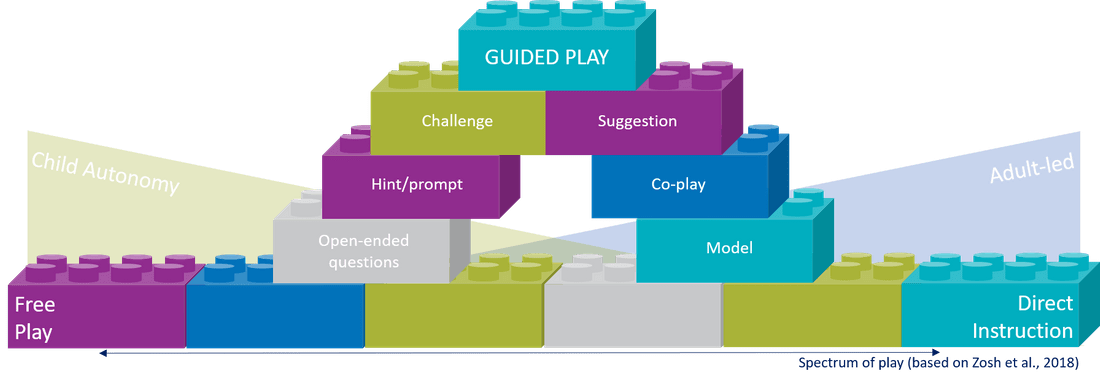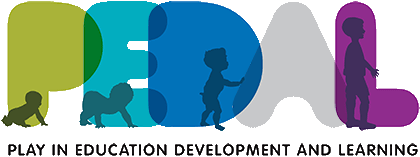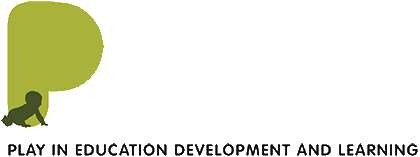When I think back to playing as a child, I remember my sister and I building a space station out of cardboard boxes. As we played, not only did we have fun, but we also had opportunities to learn and develop new knowledge and practice important social skills like working together, sharing, and turn taking.
While some types of play may seem trivial on the surface, they can create many learning opportunities for children. There’s evidence to suggest that children’s enjoyment and motivation may support their ability to learn through play. Having adults support a child’s playful exploration can allow play to be an even greater learning opportunity. While supporting children’s play may have many benefits, finding the time to facilitate learning through play is often easier said than done…
Juggling play and learning
The challenge of fitting time to play into busy school days is very familiar to teachers. While many teachers recognise play as valuable for children’s learning and development, they often find it incompatible with the academic focus of school curriculums. And more recently, balancing learning and play is something that families have had to get to grips with while trying to tackle home-learning during school closures.
Trying to juggle the time to make sure children are able to play and enjoy themselves but also learn and develop useful academic skills (reading, writing, numeracy) may mean parents and teachers are feeling like they have to make a hard choice between play and learning.
Uniting play and learning: Guided play
In looking to resolve this long-existing challenge, researchers have looked closely at ways in which play and learning can be united both in and out of the classroom. One example of this is ‘guided play’1.

Guided play has three important features:
- The child should have some free choice within a playful activity so that they can make their own discoveries
- The adult should have a learning goal in mind for the child (e.g. learning new words, shapes, how to share)
- The adult should provide guidance based on the individual child’s interests, needs and understanding to support them towards the learning goal
Guided play recognises that children are natural experts of play, and the interest and motivation they may experience during play can support learning. Guided play also builds on the idea that when an adult is there to provide support, children’s learning can be extended beyond what they may be capable of achieving alone. In this sense, guided play aims to bring together the best parts of free play and traditional teaching and so can be thought of as falling between the two on a ‘play spectrum’2.
The guidance adults use to support a learning goal can take different forms:
- Asking open-ended questions e.g. “What might happen next?”, “What could you do with that?”
- Modelling words and actions e.g. showing examples of sharing and turn-taking during a game
- Using hints and prompts e.g. “I wonder what would happen if…”, “Have you noticed?”, or non-verbal prompts like pointing
- Making suggestions e.g. “You could try putting that brick there to see what happens.”
- Extending learning e.g. by introducing new, relevant vocabulary as children play
An adult can initiate guided play by setting up a playful environment that focuses on a learning goal:
- Shopping role play can develop counting skills by adults modelling counting and asking open-ended questions.
- Challenging children to build the tallest tower can be used to develop positional language if an adult uses prompts and questions to introduce new vocabulary3 – e.g. “What should we put on top of the tower?”, “I wonder what could go next to the tower.”
Guidance techniques can also be used to extend children’s existing play towards a learning goal:
- An adult could ask to join in when children are role-playing ‘families’. The learning goal could be ‘understanding emotions’ and the adult may model different emotions and ask open-ended questions such as, “How might the daddy be feeling when …” or “What could we do to help the little boy feel happier?”
To provide guidance that is sensitive to individual children, it helps to take some time to observe a child while they play. Doing this makes it easier to recognise when and how a child may need adult support to reach a learning goal. Using prompts or modelling actions may be useful when a child is finding an activity difficult, while asking questions may help to extend a child’s learning. Parents and teachers are especially well placed to do this.
What benefits to guided play have research studies uncovered?
The benefits of guided play have been considered for children’s language, maths, social, and self-regulation skills. While the research seems to suggest that guided play may be more beneficial for children’s learning than if children played alone, the potential benefits of guided play over traditional teaching are currently less clear and more quality research is needed in this area.
The research seems to highlight the value of child choice and adult support in improving the learning that children may achieve through play. Importantly, there is likely no right or wrong way to use guided play. Instead, a child’s enjoyment as they play should take priority, with the adult involved taking the time to notice the child and look for ways to support them towards the learning goal that matches their needs.
Food for thought
With a challenging school year coming to an end and our thoughts turning to what the new school year may look like in September, making use of playful learning approaches, such as guided play, could bring benefits to the classroom. Many experts have emphasised the value that play may bring to supporting children’s wellbeing as they return to school and so guided play may offer one way for us to prioritise children’s wellbeing alongside their learning experiences.

References
1Guided Play: Where Curricular Goals Meet a Playful Pedagogy (Weisberg et al., 2013)
2Accessing the Inaccessible: Redefining Play as a Spectrum (Zosh et al., 2018)
3Using block play to enhance preschool children’s mathematics and executive functioning: A randomised controlled trial (Schmitt et al., 2018)

